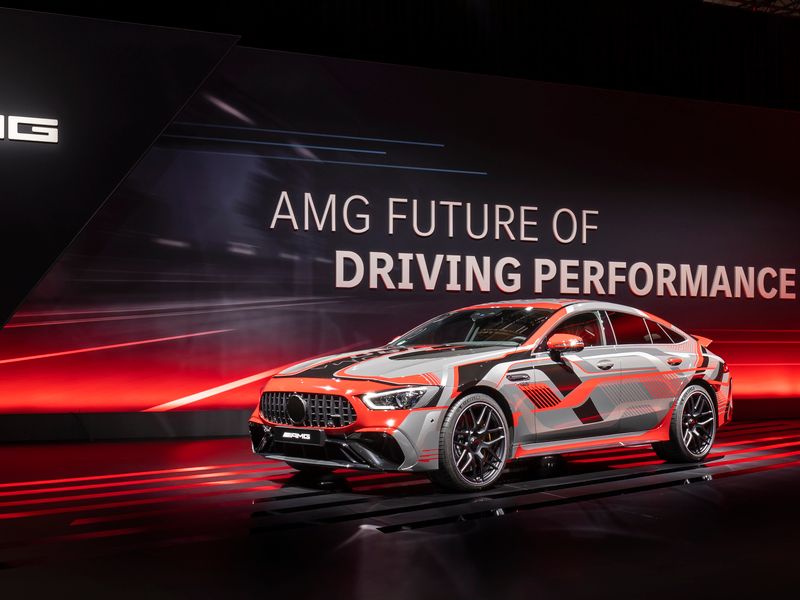
Mercedes-Benz is taking a dual-pronged strategy to electrify its performance sub-brand — with plug-in hybrids and all-electric models — as the luxury automaker barrels toward a zero-emissions future.
The first electrified Mercedes-AMGs will debut this year with a U.S. market launch expected in 2022.
“With our new drive strategy, we are transporting our hallmark DNA into an electrified future,” Mercedes-AMG global boss Philipp Schiemer noted. “We are … opening ourselves up to new target groups who can experience Mercedes-AMG as the performance luxury brand of the 21st century.”
The urgency to hit emissions targets and avoid costly fines is driving Mercedes to rethink its broader product line. Daimler’s passenger-car brand estimates at least 50 percent of its sedans, coupes and utility vehicles will be electrified by 2030, while the number of combustion-engine variants will fall by 70.
Targeting the AMG line, known for throaty V-6 and V-8 engines, for electrification could give Mercedes the biggest bang for its buck in reducing overall fleet emissions.
“Combining a fuel-efficient engine with electric motors limits the gas needed for everyday driving and provides that extra boost of power when it comes time to showcase why that AMG badge is on the trunk,” said Sam Fiorani, vice president at AutoForecast Solutions.
With its plug-in hybrids, Mercedes is priming the market for all-electric AMG models while also providing some insurance against the range anxiety associated with BEVs.
“As emissions regulations get tighter and buyers become more accustomed to electric vehicles, AMG can widen the availability of fully-electric models, eventually replacing the hybrid-electric models,” Fiorani said.
F1-inspired
The new hybrid powertrain is derived from the power pack of the Mercedes-AMG Petronas Formula 1 race car.
The platform, which combines an AMG eight-cylinder or four-cylinder engine with an electric motor, delivers more than 804 hp and a 0-to-60-mph sprint in under 3.0 seconds.
The electric motor, packaged with the 6.1 kWh battery, is located above the rear axle to improve weight distribution and vehicle handling, Mercedes said. The motor acts directly on the rear axle, delivering extra oomph when launching from a standstill, accelerating or overtaking.
“It also enables the use of the two-speed gearset with the motor that should allow it to operate to much higher vehicle speeds without losing efficiency,” said Sam Abuelsamid, principal analyst at Guidehouse Insights.
New tech
The Mercedes-AMG battery features a new thermal management system designed to ensure even heat distribution in the battery — critical to the power pack’s performance and longevity.
AMG engineers developed new modules that are only millimeters thick to individually cool 560 lithium ion cells in the battery. About 14 liters of coolant circulate from top to bottom through the battery, past each cell, with the help of a specially developed electric pump.
The thermal management system ensures the battery operates at a consistent 113 degrees regardless of how often it is charged or discharged. That allows the sports car to pull off successive fast laps in hybrid mode on the racetrack.
Direct cooling also enabled Mercedes to squeeze more high-power cells into the battery, increasing performance while reducing weight and footprint. The battery weighs196 pounds and has a power density of 1.7 kW/kg, or 1 hp per pound. Conventional batteries without direct cooling of the cells manage about half that power density, Mercedes said.
The AMG hybrids borrow another technology from F1.
By placing an electric motor in the turbocharger, Mercedes engineers solved the problem of turbo lag, the slight pause in acceleration that occurs as exhaust gases reach the turbine blades.
With an electric motor spinning the turbine, the vehicle can reach full speed nearly instantaneously and enable instant torque from the engine. The affect would be similar to that of a high-performance EV.

